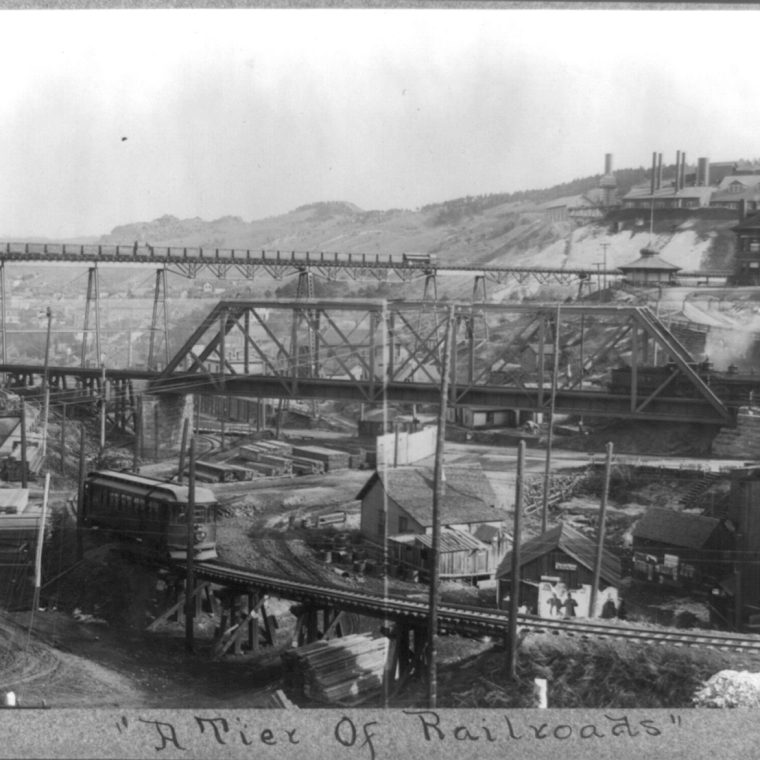That is, the mining town of Lead, South Dakota, not the metal lead. The picture above caught my eye at the Library of Congress because of its title, the obviously wrong description and the bizarre scene. The title, “A Tier of Railroads” seems straightforward enough: we’re looking at three different sets of tracks in the valley that makes up most of the shot: the streetcar at the bottom, a heavy truss bridge above (with the streetcar tracks wrapping around the left abutment) and then the high-level bridge at the top. The description: “Photograph shows a two tier railroad bridge with two trains traveling along the tracks, one train riding on an elevated track and the other riding on a lower track.” No, it does not. There are three distinct single-level bridges visible, one for each of the three separate sets of tracks.
The top tier looks weird. Specifically, the perspective is wrong no matter how I look at it. It has to be far way for the cars to look so small, but on the far left it crosses over the middle-level tracks, so It can’t be that far. I’m reasonably certain Escher wasn’t designing railroads in South Dakota around 1900, so what gives? Lead is a town of historic interest, but not necessarily very photogenic, so the choices to see these bridges are a bit limited. Here’s a postcard that makes the perspective look worse:

And another:

This last one, which actually hurts to look at – the top tier is closest than the middle tier, but so much smaller – has a nice visual clue as to what’s going on: look at the three men standing on the top-tier bridge on the far right. Either those guys are ten to twelve feet tall, or this is a very small train. A history of the railroads makes it clearer: the top tier is a mine train running on 22-inch gauge tracks (well under half of standard gauge), the center tier is the (standard-gauge) Chicago & North Western Railroad, and the bottom tier is an interurban trolley of the Deadwood Central Railroad running on a 3-foot gauge track.
One of the oldest tricks in false perspective is to vary the size of ordinary objects. This is particularly effective when someone is looking at diagonals, which are harder to get a sense of depth with than perpendicular surfaces. The fact that the three tiers of rail and bridges have three different widths is not immediately obvious, and it’s what fools our eyes (or at least mine) into thinking there’s something weird with the geometry.




You must be logged in to post a comment.